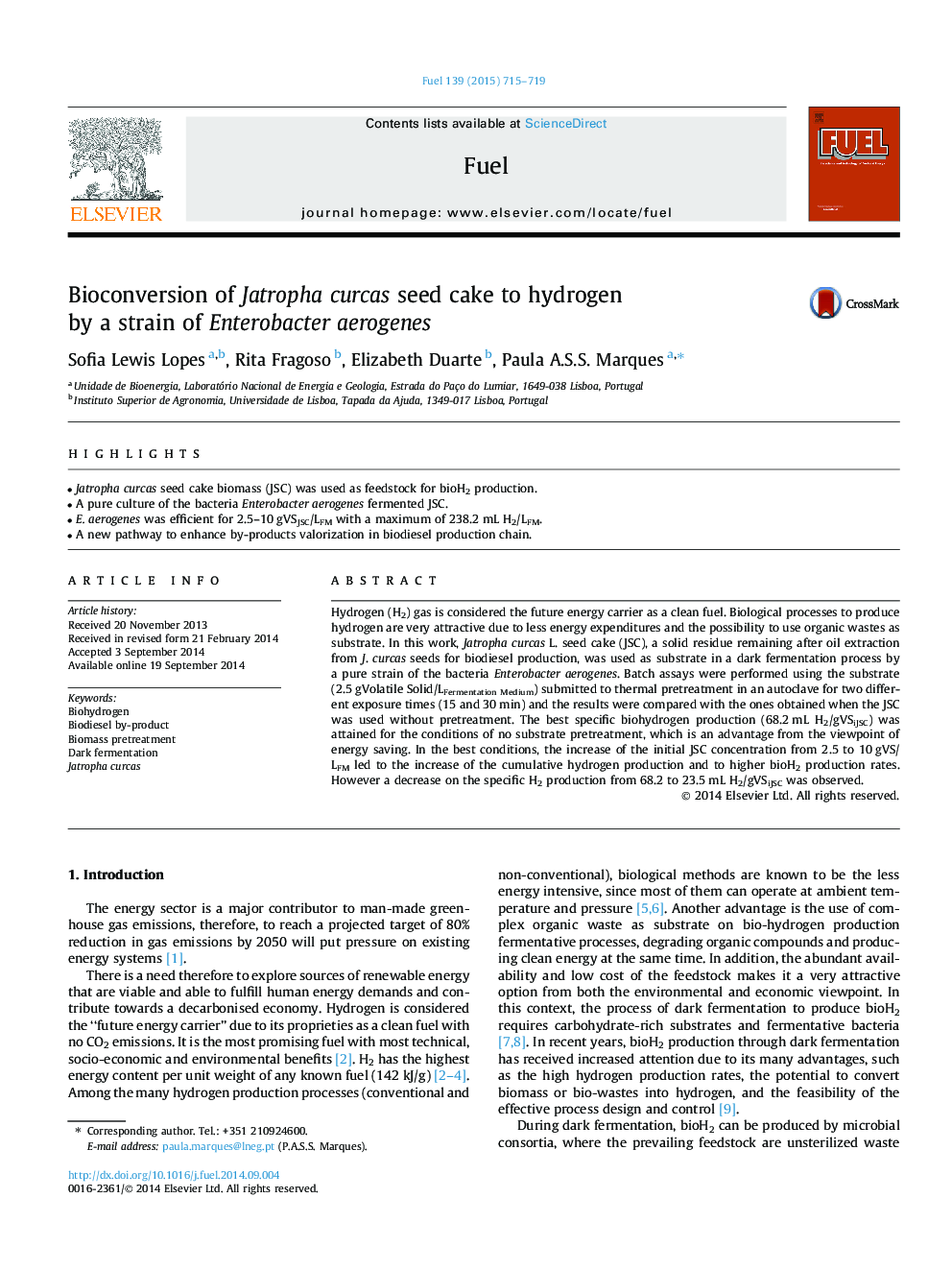| Article ID | Journal | Published Year | Pages | File Type |
|---|---|---|---|---|
| 6636593 | Fuel | 2015 | 5 Pages |
Abstract
Hydrogen (H2) gas is considered the future energy carrier as a clean fuel. Biological processes to produce hydrogen are very attractive due to less energy expenditures and the possibility to use organic wastes as substrate. In this work, Jatropha curcas L. seed cake (JSC), a solid residue remaining after oil extraction from J. curcas seeds for biodiesel production, was used as substrate in a dark fermentation process by a pure strain of the bacteria Enterobacter aerogenes. Batch assays were performed using the substrate (2.5Â gVolatile Solid/LFermentation Medium) submitted to thermal pretreatment in an autoclave for two different exposure times (15 and 30Â min) and the results were compared with the ones obtained when the JSC was used without pretreatment. The best specific biohydrogen production (68.2Â mL H2/gVSiJSC) was attained for the conditions of no substrate pretreatment, which is an advantage from the viewpoint of energy saving. In the best conditions, the increase of the initial JSC concentration from 2.5 to 10Â gVS/LFM led to the increase of the cumulative hydrogen production and to higher bioH2 production rates. However a decrease on the specific H2 production from 68.2 to 23.5Â mL H2/gVSiJSC was observed.
Related Topics
Physical Sciences and Engineering
Chemical Engineering
Chemical Engineering (General)
Authors
Sofia Lewis Lopes, Rita Fragoso, Elizabeth Duarte, Paula A.S.S. Marques,
